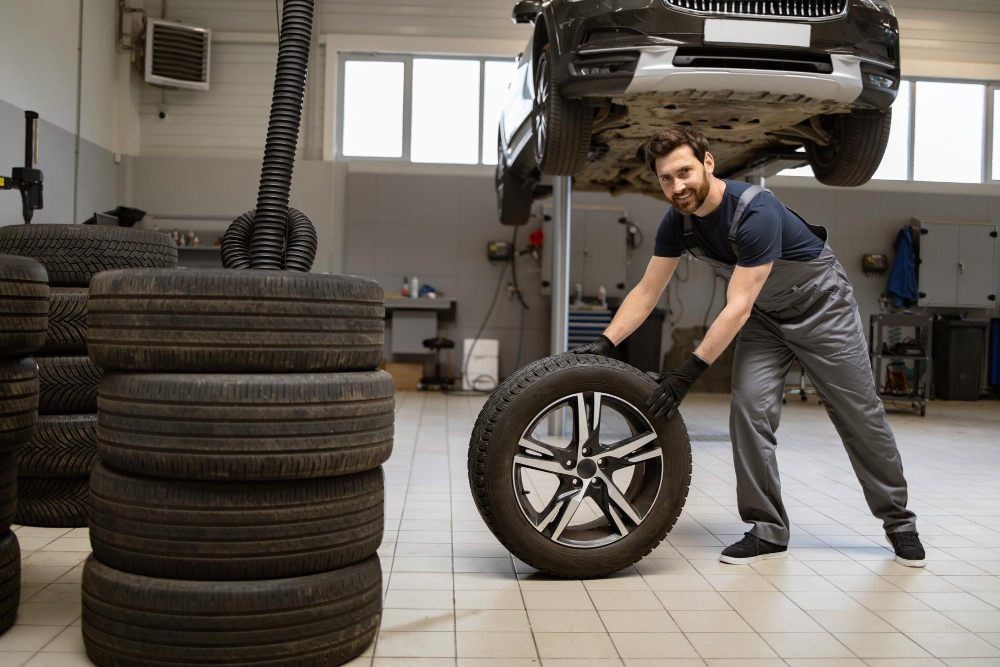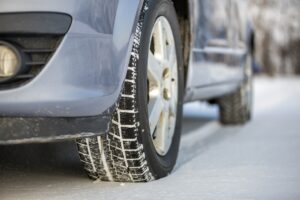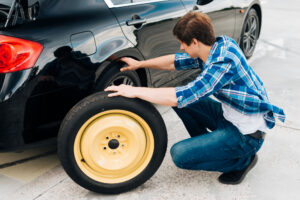Are you tired of unexpected flat tires ruining your day? As a St. Louis driver, you know how frustrating it can be to find yourself stranded on the side of the road with a deflated tire. But what if we told you that many flat tires are preventable?
Reliable Guys Towing Service, your trusted partner in roadside assistance, is here to share some invaluable wisdom. Let’s dive into ten crucial tips for flat tire prevention. And remember, if you ever find yourself in need of a flat tire service in St Louis, we’re just a call away at (314) 325-1016.
-
Monitor Tire Pressure: The Foundation of Flat Tire Prevention
Ever wondered if a car tire can go flat for no reason? While it might seem that way, there’s usually a culprit – and often, it’s improper tire pressure. Underinflated tires are more prone to damage and wear. They can also lead to decreased fuel efficiency and poor handling. Make it a habit to check your tire pressure at least once a month, and always before long trips. It’s a simple task that can save you a world of trouble.
Most modern cars have tire pressure monitoring systems, but don’t rely solely on these for flat tire prevention. Use a reliable tire pressure gauge to get accurate readings. Remember, the correct pressure for your tires can usually be found in your vehicle’s manual or on a sticker inside the driver’s side door frame.
-
Rotate Your Tires Regularly: Balancing Wear for Better Prevention
Think of tire rotation as a spa day for your wheels. It ensures even wear across all four tires, extending their lifespan and reducing the risk of flats. Aim to rotate your tires every 5,000 to 8,000 miles, or as recommended by your vehicle manufacturer.
During rotation, each tire is moved to a different position on the vehicle. This helps balance out wear patterns that develop due to each tire’s specific location and function. For example, front tires tend to wear faster on the outside edges due to turning. By rotating them to the rear, you extend their overall life.
-
Dodge Those Road Hazards: Proactive Flat Tire Prevention
St. Louis streets can be a minefield of potential tire punctures. From potholes to debris, staying alert can help you avoid these hazards. If you can’t safely avoid an obstacle, slow down as much as possible before impact.
Keep a safe following distance from the vehicle in front of you. This not only improves your overall safety but also gives you more time to spot and react to road hazards. Be especially cautious in construction zones, where nails and other sharp objects are more likely to be present.
-
Don’t Overload Your Vehicle: Preventing Overload-Related Flats
Your car isn’t a clown car – don’t try to stuff it like one! Overloading puts extra stress on your tires, increasing the risk of a blowout. Check your vehicle’s manual for weight limits and stick to them.
Remember, the weight limit includes passengers, cargo, and any additional equipment you might be carrying. If you frequently carry heavy loads, consider upgrading to tires with a higher load rating. This small investment is a big step towards flat tire prevention due to overloading.
-
Regular Tire Inspections: Your First Line of Defense
Flat tire prevention involves getting up close and personal with your tires. Look for signs of wear, cuts, or embedded objects. If you spot anything suspicious, don’t ignore it. A small issue today could turn into a big problem tomorrow.
Pay special attention to the tire sidewalls. Cracks, bulges, or cuts in this area can indicate serious damage that could lead to a blowout. Also, check the tread depth regularly. You can use the penny test.
-
Alignment Issues: The Silent Tire Killer
If your car pulls to one side or your steering wheel vibrates, you might have an alignment problem. Misalignment causes uneven tire wear, which can lead to flats. Don’t put off getting your alignment checked – it’s cheaper than replacing a tire!
Hitting curbs, potholes, or even minor fender benders can throw off your alignment. If you’ve recently experienced any of these, or if it’s been more than a year since your last alignment check, it’s time to have it looked at by a professional. Make it a habit to include this in your flat tire prevention routine.
-
Choose the Right Tires for St. Louis Weather
St. Louis weather can be as unpredictable as a game of chance. Make sure your tires and flat tire prevention plan are up to the challenge. Consider all-season tires for year-round performance, or switch between summer and winter tires for optimal safety.
All-season tires are a good compromise for most St. Louis drivers, providing decent performance in various conditions. However, if you frequently drive in severe winter weather, dedicated winter tires might be a better choice for those months. They provide superior traction in snow and ice, reducing your risk of accidents and tire damage.
-
Age Matters: Don’t Let Your Tires Get Too Old
Even if your tires look fine, age can compromise their integrity. As a rule of thumb for your flat tire prevention strategy, consider replacing tires that are more than six years old, regardless of tread wear.
Rubber compounds in tires break down over time, even if the tire isn’t being used. This aging process can lead to sudden failure, even if the tire looks fine from the outside. You can check the age of your tires by looking at the DOT code on the sidewall. The last four digits indicate the week and year of manufacture.
-
Wheel Maintenance: The Unsung Hero of Tire Care
Your wheels need love too! Bent or damaged wheels can cause air leaks and uneven tire wear. Keep an eye out for any visible damage and address it promptly.
If you hit a pothole or curb hard, have your wheels inspected for damage. Even minor bends can cause problems over time. Also, keep your wheels clean and free from brake dust and road grime. This not only keeps them looking good but also makes it easier to spot any damage or issues.
-
Be Prepared: The Emergency Kit
Despite our best flat tire prevention efforts, sometimes flat tires happen. Be ready with an emergency kit including a spare tire, jack, lug wrench, and flashlight. But here’s a question: how long can a car with a flat tire sit? While it’s best to address the issue immediately, a car can typically sit on a flat tire for a few hours without causing significant damage to the wheel. However, driving on a flat tire can ruin it beyond repair within just a few miles.
Final Words
Remember, flat tire prevention is always better than cure. By following these tips, you’re not just avoiding flat tires – you’re ensuring a smoother, safer driving experience on St. Louis roads. Regular maintenance and attention to your tires can save you time, money, and stress in the long run.
At Reliable Guys Towing Service, we’re committed to keeping you rolling. While these tips can help prevent many flat tire situations, we know that sometimes life throws you a curveball.
That’s why we’re here 24/7, ready to assist with any tire emergencies. Our experienced technicians can help with on-the-spot repairs or tow your vehicle to a trusted repair shop if needed. Save our number (314) 325-1016 in your contacts – because when it comes to flat tires, it’s better to be safe than sorry!




